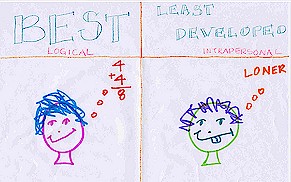 |
California Standards for the
Teaching Profession: Standard Four
PLANNING INSTRUCTION & DESIGNING LEARNING EXPERIENCES FOR ALL STUDENTS 4.1 Drawing on and valuing students backgrounds, interests, and developmental needs 4.2 Establishing and articulating goals for student learning 4.3 Developing and sequencing instructional activities and materials for student learning 4.4 Designing short-term and long-term plans to foster student learning 4.5 Modifying instructional plans to adjust for student needs |
